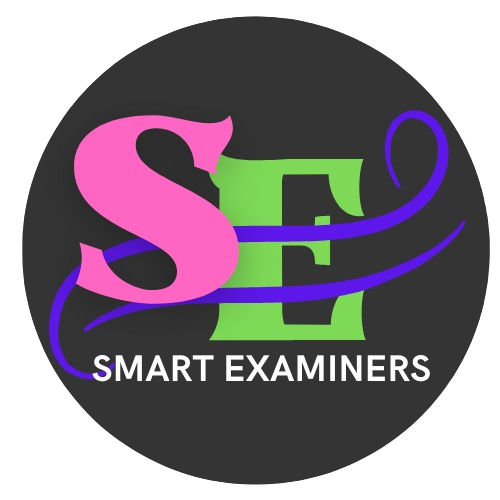📚 How to Implement Continuous Assessment in Online Learning (2025 Guide)
🟢 Updated: May 2025 — Online learning isn’t a trend anymore — it’s the new norm. But one lingering question for educators and course creators is:
"How do we ensure students are continuously learning, not just cramming for one big final exam?"
That’s where Continuous Assessment (CA) comes in. And in this guide, we’ll walk you through how to implement it effectively in your online courses — with tools, strategies, and real-world examples that actually work.
🚀 By the end of this article, you'll know how to integrate CA in your LMS, create meaningful activities, automate grading, and boost engagement in your virtual classroom.
Brought to you by SmartExaminers.com – Your AI-powered tool for generating exams and answers based on any curriculum, downloadable in editable Word format.
🧭 What is Continuous Assessment (CA)?
Continuous Assessment is an ongoing evaluation method that involves assessing students throughout a course rather than at the end.
🔄 How is it different from traditional exams?
| Traditional Exams | Continuous Assessment |
|---|---|
| One-time event | Ongoing throughout course |
| Often high-stakes | Low-stakes, formative |
| Focuses on results | Focuses on learning process |
CA emphasizes progress, feedback, and improvement — making it ideal for online learning environments.
🔍 Why Continuous Assessment Matters in Online Learning
✅ Maintains engagement: Students stay motivated with regular feedback.
✅ Reduces academic dishonesty: Frequent low-stakes tests deter cheating.
✅ Supports different learning styles: Projects, peer reviews, quizzes — CA offers variety.
✅ Improves retention: Spaced repetition and regular application improve memory.
🎯 In fact, a 2024 study by EDUCAUSE showed that students in online courses with continuous assessment performed 27% better than those with traditional models.
🛠️ How to Implement Continuous Assessment in Online Learning: Step-by-Step
Let’s dive into the 9 key steps that make continuous assessment successful in virtual classrooms.
1. 🧠 Define Clear Learning Outcomes
Every CA strategy begins with a crystal-clear understanding of:
- What do you want students to learn?
- How will you measure it?
- Which skills are essential?
🎯 Pro Tip: Use SMART objectives — Specific, Measurable, Achievable, Relevant, Time-bound.
Example:
"By Week 4, students will be able to write a persuasive essay with a clear thesis, evidence, and counterargument."
2. 💻 Choose the Right LMS Tools
Most Learning Management Systems (LMS) offer built-in tools to support continuous assessment:
| Tool | Purpose |
|---|---|
| Quizzes | Quick knowledge checks |
| Assignments | In-depth analysis |
| Forums | Peer interaction & reflection |
| Rubrics | Clear grading criteria |
| Analytics | Track performance over time |
Top LMS platforms supporting CA:
- Moodle 🧩
- Canvas 🎓
- Google Classroom 🏫
- Microsoft Teams for Education 💼
- TalentLMS 🚀
3. 🧪 Use Formative Assessments Weekly
Formative assessments help you monitor student progress and adjust teaching accordingly.
📌 Examples of Weekly CA Activities:
- 📋 Mini quizzes
- ✍️ Reflective journals
- 🎥 Video responses
- 💬 Forum posts
- 🧩 Interactive polls
🧠 Expert Tip: Use short quizzes at the end of each module to reinforce key points and check understanding.
4. 📊 Incorporate Auto-Grading & Feedback
Speed is key online. When students submit work, they should get immediate, actionable feedback.
Use these tools:
- Google Forms + Flubaroo for auto-grading
- Quizizz / Kahoot for instant quiz feedback
- Grammarly + Turnitin for writing tasks
- Peergrade for structured peer assessments
🔁 Set up automatic email notifications for scores and comments to close the feedback loop.
5. 📁 Diversify Assessment Types
Don’t rely solely on quizzes. Online learners need variety.
| Method | Purpose |
|---|---|
| 📝 Essays | Critical thinking |
| 🎤 Audio submissions | Verbal skills |
| 🖼️ Infographics | Visual learners |
| 💻 Coding assignments | STEM courses |
| 🔁 Peer reviews | Collaboration & feedback |
🎨 CA allows creative expression while still aligning with your learning goals.
6. 👩🏫 Encourage Peer-to-Peer Feedback
Online classrooms can feel isolating. Peer feedback builds connection, reinforces learning, and promotes accountability.
🛠️ Tools like:
- Google Docs comments
- Moodle peer review
- Flipgrid video replies
💬 Structure peer feedback sessions with rubrics or prompts so students know what to look for.
7. 🧮 Track Progress with Learning Analytics
Data is your friend in online learning.
🔍 Track:
- Completion rates
- Quiz attempts
- Forum participation
- Time spent per activity
📊 Use this data to send personalized messages:
“Hi Alex, we noticed you haven’t completed Module 3. Let us know how we can help!”
Most LMSs provide built-in dashboards or allow Google Analytics integration.
8. 🔄 Scaffold Assessments Over Time
Design your course so each week builds toward a final capstone.
📈 Example in a Writing Course:
- Week 1: Brainstorming ideas
- Week 2: Drafting thesis
- Week 3: Peer review
- Week 4: Final essay submission
🎯 This promotes mastery through repetition and reduces overwhelm at the end.
9. 🎓 Offer Certificates or Badges
🟡 Micro-credentials boost motivation.
Award badges for:
- Completing all quizzes
- Top peer reviewer
- Consistent participation
🏆 Use tools like Credly, Badgr, or LMS-built credentials to gamify learning and recognize achievements.
💡 Remember: Continuous assessment isn't just a teaching strategy — it's a mindset shift toward ongoing improvement and authentic learning.
Need curriculum-based exams and model answers for your learners?
✅ Head over to SmartExaminers.com — generate, preview, and download editable assessments in seconds.
 SmartExaminers
SmartExaminers


